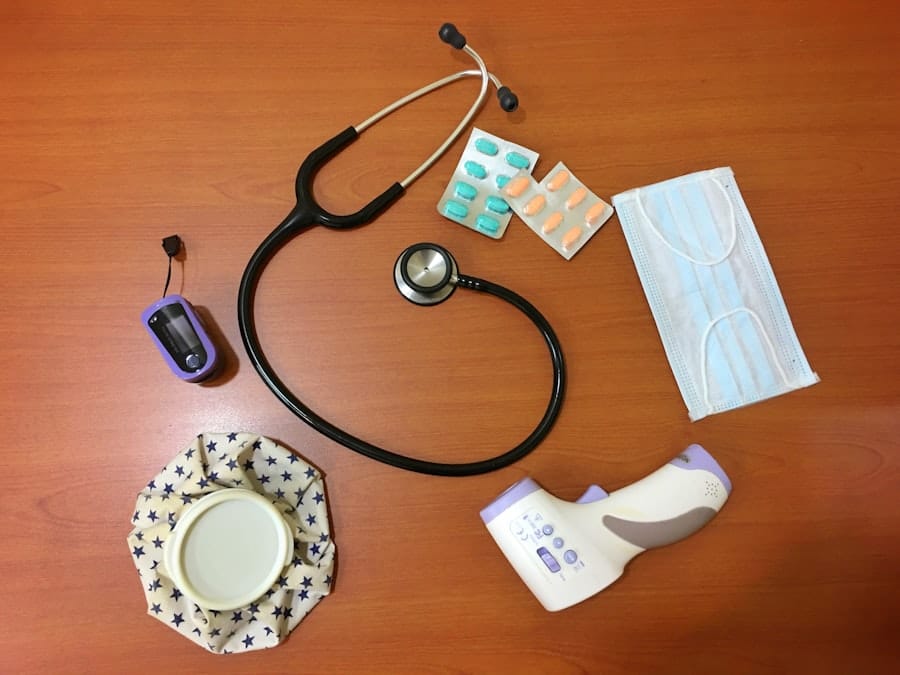The integration of artificial intelligence (AI) into healthcare has revolutionized the way medical professionals diagnose and treat patients.
Voice AI, which encompasses natural language processing (NLP) and machine learning algorithms, allows for the analysis of spoken language to extract meaningful insights.
In healthcare, this technology can facilitate patient interactions, streamline administrative tasks, and enhance diagnostic accuracy. The ability to interpret vocal patterns and nuances opens new avenues for understanding patient conditions, particularly in the realm of respiratory health. As healthcare systems worldwide grapple with increasing patient loads and the demand for more efficient care delivery, voice AI offers a solution that can alleviate some of these pressures.
By enabling real-time monitoring and assessment of respiratory conditions through voice analysis, healthcare providers can potentially identify issues earlier and tailor interventions more effectively. This technology not only enhances the patient experience by making interactions more intuitive but also empowers clinicians with data-driven insights that can lead to better outcomes. The following sections will delve deeper into the specific applications of voice AI in detecting respiratory conditions, highlighting its transformative potential in this critical area of healthcare.
Key Takeaways
- Voice AI has the potential to revolutionize healthcare by enabling more efficient and accurate detection of respiratory conditions.
- Voice AI can play a crucial role in early detection and monitoring of respiratory conditions such as asthma, COPD, and pneumonia.
- Case studies have shown promising results in using voice AI for detecting respiratory conditions, including identifying cough patterns and analyzing vocal biomarkers.
- The benefits of using voice AI for respiratory condition detection include early intervention, remote monitoring, and personalized treatment, but limitations include accuracy and privacy concerns.
- Ethical considerations and privacy concerns must be carefully addressed when using voice AI in healthcare, including data security and patient consent.
The Role of Voice AI in Detecting Respiratory Conditions
Voice AI plays a pivotal role in the detection of respiratory conditions by analyzing vocal characteristics that may indicate underlying health issues. The human voice is a complex signal that carries a wealth of information, including pitch, tone, and cadence. Researchers have identified that certain respiratory conditions, such as asthma, chronic obstructive pulmonary disease (COPD), and pneumonia, can manifest distinct vocal signatures.
For instance, wheezing or changes in breath sounds can be detected through advanced algorithms that process audio recordings of a patient’s voice. This capability allows for non-invasive monitoring and assessment, which is particularly beneficial for patients who may have difficulty accessing traditional healthcare services. Moreover, voice AI can facilitate remote patient monitoring, enabling healthcare providers to track respiratory conditions without requiring patients to visit a clinic physically.
This is especially relevant in the context of chronic diseases where regular check-ups are essential for managing symptoms and preventing exacerbations. By utilizing voice analysis tools, clinicians can receive alerts about potential deterioration in a patient’s condition based on vocal changes detected through telehealth platforms or mobile applications. This proactive approach not only enhances patient safety but also optimizes resource allocation within healthcare systems.
Case Studies of Voice AI Applications in Respiratory Condition Detection

Several case studies illustrate the practical applications of voice AI in detecting respiratory conditions, showcasing its effectiveness and potential for widespread adoption. One notable example is the work conducted by researchers at the Massachusetts Institute of Technology (MIT), who developed an AI system capable of identifying asthma exacerbations through voice recordings. In their study, patients were asked to record their voices while reading specific phrases.
The AI model analyzed these recordings for subtle changes in vocal patterns associated with asthma attacks. The results demonstrated a high level of accuracy in predicting exacerbations, suggesting that voice analysis could serve as an early warning system for patients at risk. Another compelling case study comes from a collaboration between a healthcare startup and a major hospital network that aimed to improve COPD management through voice AI technology.
The project involved deploying a mobile application that allowed patients to record their voices daily. The app utilized machine learning algorithms to analyze the recordings for indicators of worsening symptoms, such as increased breathlessness or changes in speech patterns. Clinicians received real-time feedback based on the analysis, enabling them to adjust treatment plans promptly.
This initiative not only improved patient engagement but also led to a significant reduction in hospital admissions related to COPD exacerbations.
Benefits and Limitations of Using Voice AI for Respiratory Condition Detection
The benefits of employing voice AI for respiratory condition detection are manifold. One of the most significant advantages is the non-invasive nature of voice analysis, which eliminates the need for uncomfortable procedures like spirometry or bronchoscopy. Patients can provide valuable health information simply by speaking into a device, making it easier for those with mobility issues or anxiety about medical settings to participate in their care.
Additionally, voice AI can facilitate continuous monitoring, allowing for timely interventions that can prevent serious complications. However, there are limitations to consider when implementing voice AI in respiratory healthcare. One major concern is the variability in individual vocal characteristics; factors such as age, gender, and even emotional state can influence voice patterns.
This variability may lead to false positives or negatives in diagnosis if not adequately accounted for in the algorithms. Furthermore, while voice AI can provide valuable insights, it should not replace traditional diagnostic methods entirely. Instead, it should be viewed as a complementary tool that enhances clinical decision-making rather than a standalone solution.
Ethical and Privacy Considerations in Using Voice AI for Healthcare
The deployment of voice AI technology in healthcare raises important ethical and privacy considerations that must be addressed to ensure patient trust and compliance. One primary concern is the collection and storage of sensitive health data derived from voice recordings.
Healthcare providers must establish transparent data governance policies that outline how patient information will be handled and ensure compliance with regulations such as the Health Insurance Portability and Accountability Act (HIPAA) in the United States. Additionally, there is an ethical imperative to ensure that voice AI systems are designed to minimize bias and promote equity in healthcare delivery. If the algorithms are trained on datasets that lack diversity, there is a risk that they may not perform equally well across different demographic groups.
This could lead to disparities in care quality and outcomes for marginalized populations. To mitigate these risks, developers must prioritize inclusivity in their training datasets and continuously evaluate their systems for potential biases.
Future Developments and Innovations in Voice AI for Respiratory Condition Detection

The future of voice AI in detecting respiratory conditions is poised for significant advancements as technology continues to evolve. One promising area of development is the integration of multimodal data sources into voice analysis systems. By combining vocal data with other physiological indicators—such as heart rate variability or oxygen saturation levels—AI models could achieve even greater accuracy in diagnosing respiratory conditions.
This holistic approach would enable clinicians to gain a comprehensive understanding of a patient’s health status and tailor interventions accordingly. Moreover, advancements in machine learning techniques are likely to enhance the capabilities of voice AI systems further. For instance, deep learning algorithms could improve the ability to recognize complex vocal patterns associated with various respiratory diseases.
As more data becomes available through telehealth platforms and wearable devices, these models will become increasingly sophisticated, allowing for real-time analysis and feedback that can significantly impact patient care.
Challenges and Obstacles in Implementing Voice AI in Respiratory Healthcare
Despite its potential benefits, several challenges hinder the widespread implementation of voice AI technology in respiratory healthcare. One significant obstacle is the need for robust infrastructure to support the deployment of these systems across diverse healthcare settings. Many clinics and hospitals may lack the necessary technological resources or expertise to integrate voice AI into their existing workflows effectively.
This gap could lead to disparities in access to advanced diagnostic tools between urban and rural healthcare facilities. Additionally, there is a need for rigorous clinical validation of voice AI applications before they can be widely adopted in practice. While initial studies demonstrate promising results, further research is required to establish the reliability and accuracy of these technologies across larger populations and varied clinical contexts.
Regulatory bodies must also develop clear guidelines for evaluating and approving voice AI systems to ensure they meet safety and efficacy standards.
The Potential Impact of Voice AI on Respiratory Healthcare
The potential impact of voice AI on respiratory healthcare is profound, offering innovative solutions that could transform how conditions are detected and managed. By harnessing the power of vocal analysis, healthcare providers can gain valuable insights into patient health that were previously difficult to obtain through traditional methods. As technology continues to advance and address existing challenges, voice AI has the potential to enhance patient outcomes significantly while improving efficiency within healthcare systems.
As we look toward the future, it is essential to navigate the ethical landscape surrounding this technology carefully while ensuring equitable access for all patients. By prioritizing transparency, inclusivity, and rigorous validation processes, stakeholders can work together to unlock the full potential of voice AI in respiratory healthcare—ultimately leading to better diagnosis, treatment, and management of respiratory conditions worldwide.
Voice AI technology is revolutionizing the healthcare industry by enabling the early detection of respiratory conditions through vocal biomarkers. This innovative use of artificial intelligence has the potential to significantly improve patient outcomes and reduce healthcare costs. For more information on the latest advancements in AI technology, check out this article on the

